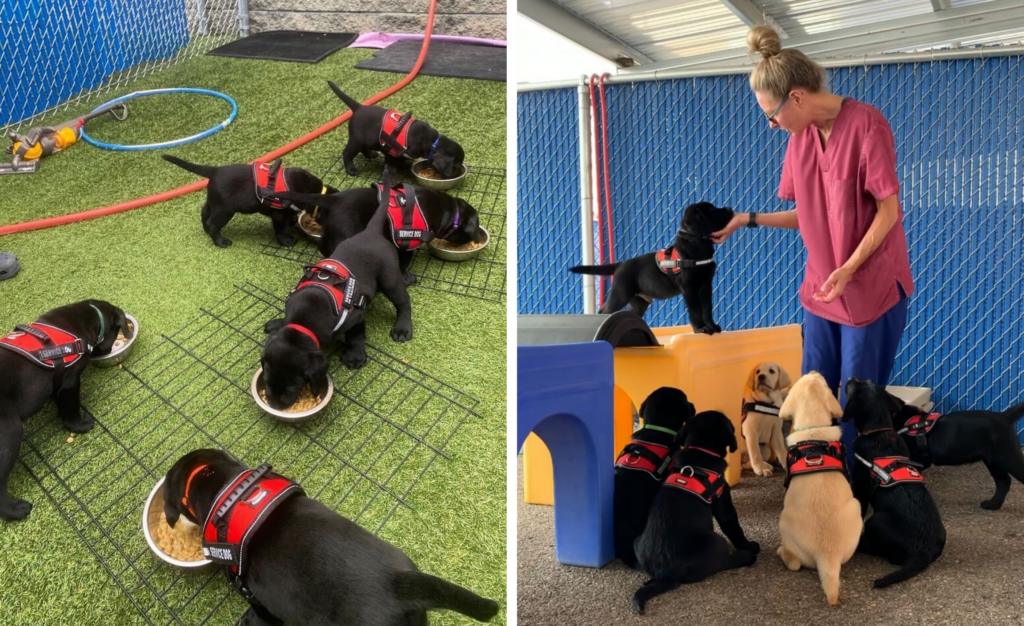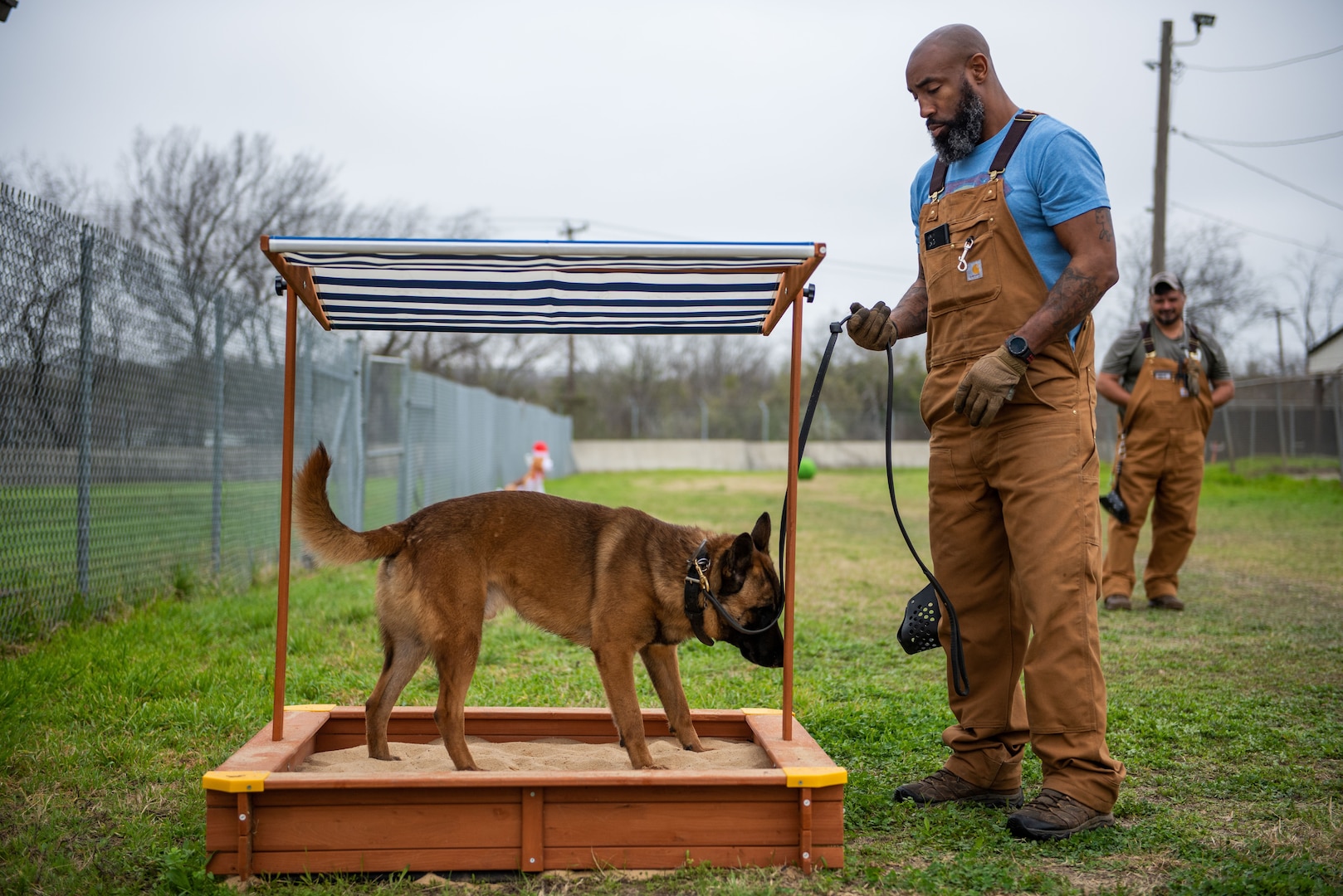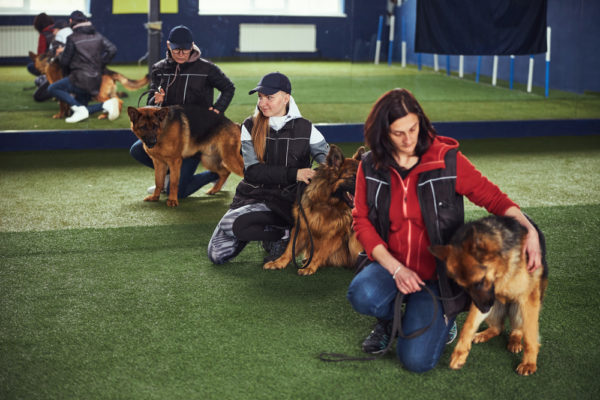Top Pet Dog Training Techniques Every Owner Ought To Know

Positive Reinforcement Strategies
Using positive reinforcement techniques is important for effective dog training, as it promotes a relying on bond in between the pet dog and the fitness instructor. This technique concentrates on gratifying desirable habits instead of punishing unwanted ones, producing an atmosphere favorable to learning. Incentives can include treats, appreciation, or play, which motivate pets to duplicate the behaviors that earn them these benefits.

In addition, this strategy enhances the pet dog's excitement for training sessions. They are a lot more involved and responsive when dogs associate training with positive experiences. Dog training. Beyond instant therapy, positive support urges a collaborative connection between the pet and trainer, reducing anxiousness and worry
To take full advantage of effectiveness, it is vital to provide rewards without delay, making sure the pet connects the behavior with the support. Essentially, positive support strategies not just yield better-trained pet dogs but likewise promote an unified partnership in between canine and proprietor.
Remote Control Training Method
The remote control training method is a very reliable method that builds on the principles of favorable reinforcement by including an unique audio to mark preferred actions. This method utilizes a small handheld gadget that produces a clicking sound, allowing trainers to connect with their dogs in a prompt and clear manner. When a canine carries out a habits that the owner wishes to encourage, the clicker is triggered, followed by an incentive, usually in the kind of treats or praise.
The trick to effective clicker training exists in uniformity and timing. It is essential to click at the exact minute the desired behavior happens, guaranteeing that the canine connects the noise with the activity and the succeeding reward. This technique not only improves interaction yet additionally cultivates a stronger bond in between the canine and the owner, as it encourages involvement and interaction throughout training sessions.
Remote control training can be used to a variety of behaviors and commands, from standard obedience to much more intricate tricks. Its versatility and effectiveness make it a popular technique among expert fitness instructors and pet dog proprietors alike, paving the way for a receptive and trained canine companion.
Chain Training Essentials
Efficient chain training is essential for making sure a pleasurable and secure strolling experience for both pet dogs and their owners. A level collar may work for some pets, while others might benefit from a harness that decreases pulling.
Introduce your pet to the leash gradually, allowing them to explore it in a comfortable environment. This entails rewarding your pet dog for strolling go now next to you instead than pulling ahead.
If your dog starts to draw, stop strolling right away. Wait till they return to your side before resuming. This instructs them that drawing does not bring about progress. Furthermore, practice different strolling environments to help your dog adjust to disturbances.
Normal technique will solidify your pet's understanding of leash etiquette. Bear in mind that chain training is a recurring process; persistence and consistency will certainly generate the best outcomes, fostering a positive experience for both you and your canine friend.
Socialization Techniques
Socializing is an essential aspect of pet training that ought to preferably begin throughout puppyhood however can be helpful at any age. Reliable socializing assists dogs create confidence and reduces the probability of behavioral problems. To implement effective socializing techniques, reveal your dog to a variety of environments, people, and various other pets.
Start with regulated setups, such as young puppy classes or organized playgroups, where young dogs can engage securely. Slowly introduce your canine to new experiences, consisting of different noises, surface areas, and tasks. Make sure these encounters are positive and rewarding to develop a feeling of security.
For grown-up pet dogs or those doing not have direct exposure, start with low-stress situations. Short, positive interactions with pleasant human beings and tranquil canines can develop favorable organizations. Make use of deals with and appreciation to enhance desirable actions during these experiences.

Consistency and Persistence
Acknowledging the importance of uniformity and patience in dog training is vital for achieving long lasting results. Inconsistent training can lead to confusion, making it difficult for the pet dog to understand commands or actions, eventually impeding development.
Pets, like people, discover at their own pace. This fosters a trusting partnership in between the dog and proprietor, motivating a more prepared and passionate learner.
To cultivate consistency and persistence, develop a routine training routine, utilize the very same commands, and ensure that all household participants use the exact same training principles - Dog training. By doing so, you produce a stable setting helpful to finding out, enabling your canine to thrive and create into a well-behaved friend
Conclusion
Finally, effective pet training strategies, such as positive reinforcement, remote control training, and proper leash training, are necessary for promoting a healthy owner-dog partnership. In addition, executing socialization strategies and keeping consistency and perseverance throughout the training my explanation procedure contributes considerably to a pet's total well-being. By incorporating these methods, pet proprietors can assist in the development of well-adjusted, loyal animals, inevitably improving the lifestyle for both the owner and the pet.
Among the most noticeable methods are favorable support, remote control training, site here and leash training, each offering one-of-a-kind benefits that add to a well-behaved canine. As we discover these essential strategies, it ends up being noticeable that grasping their nuances can considerably influence the training experience and the canine's general actions.Utilizing favorable reinforcement techniques is necessary for effective canine training, as it cultivates a relying on bond between the pet and the trainer.In final thought, reliable pet training strategies, such as positive support, remote control training, and appropriate chain training, are vital for fostering a healthy owner-dog relationship. By integrating these approaches, pet dog owners can promote the advancement of well-adjusted, loyal animals, eventually enhancing the top quality of life for both the owner and the pet dog.